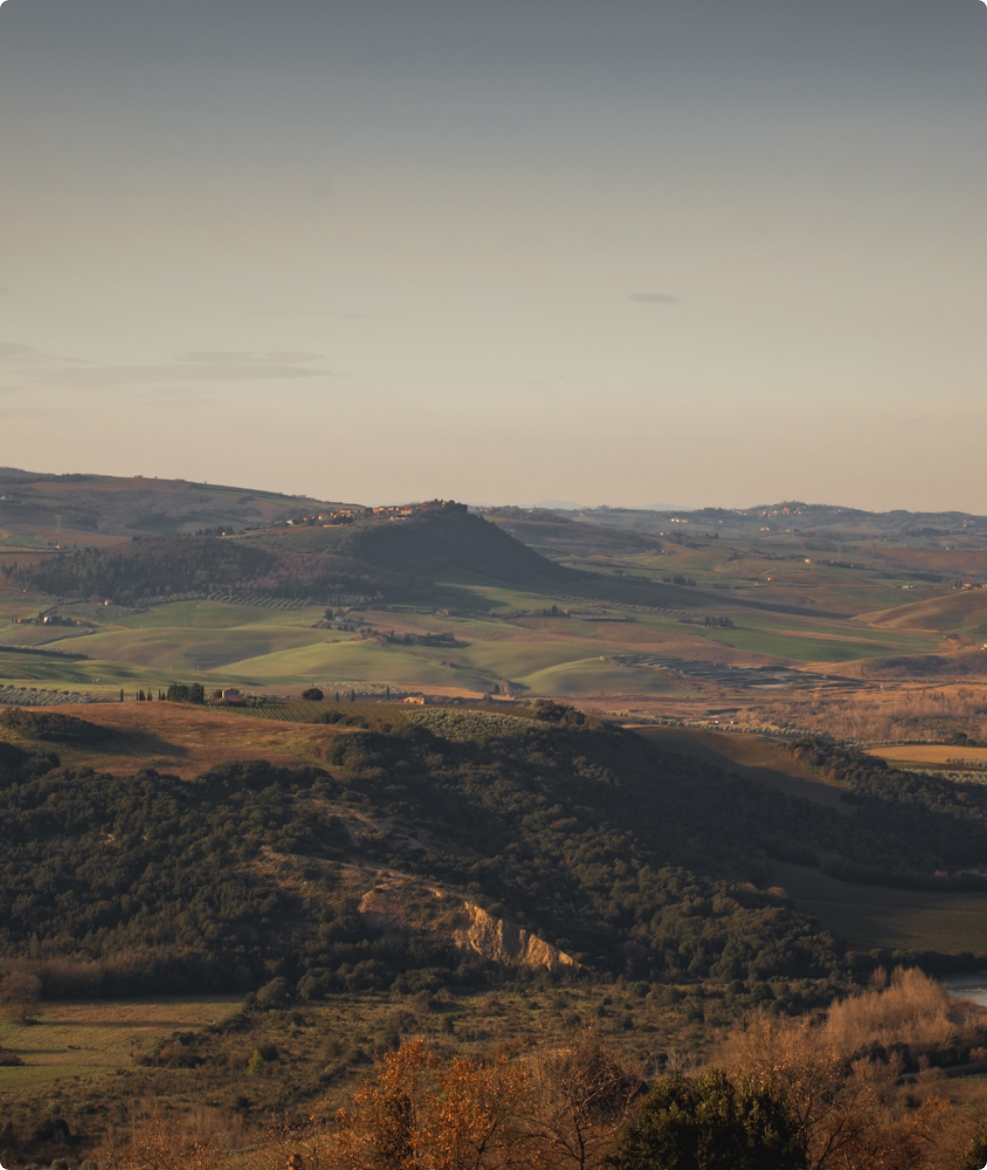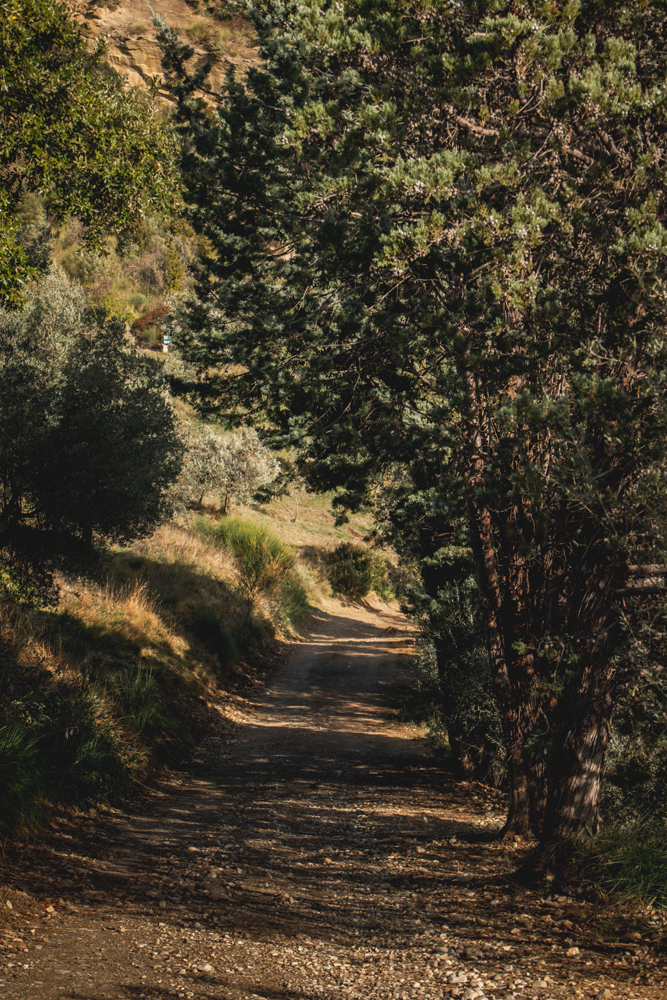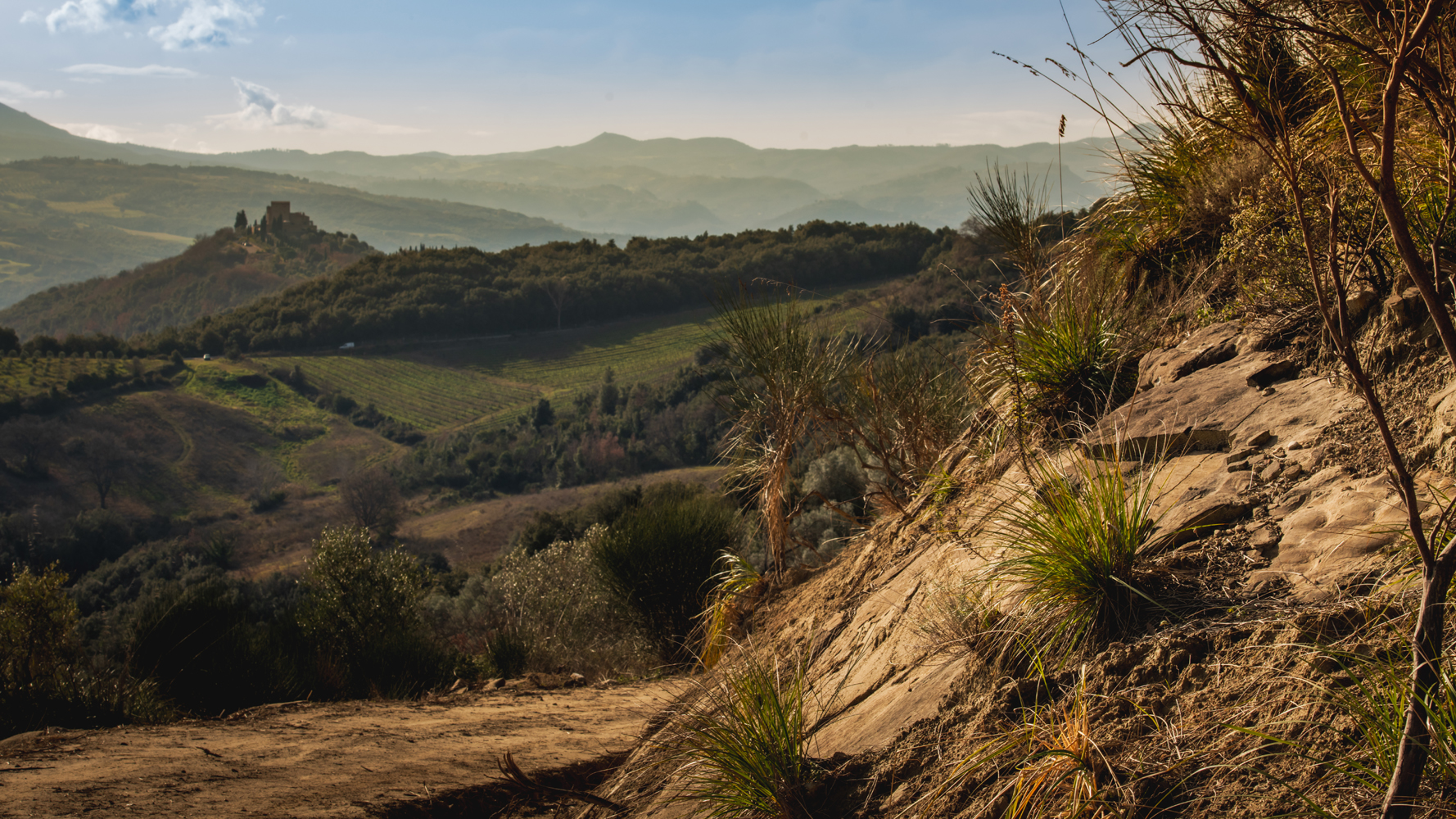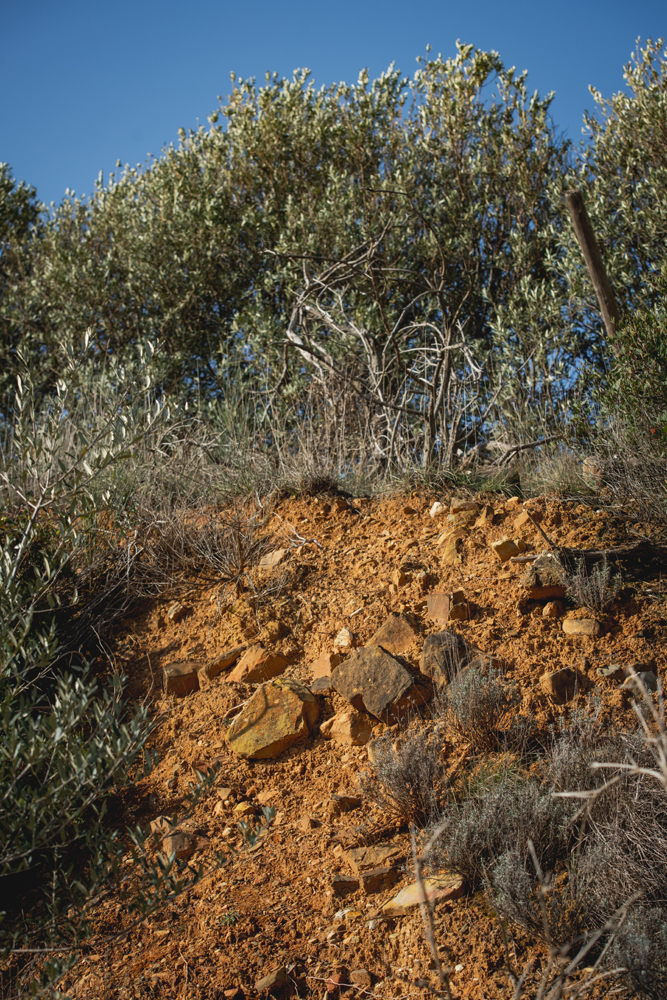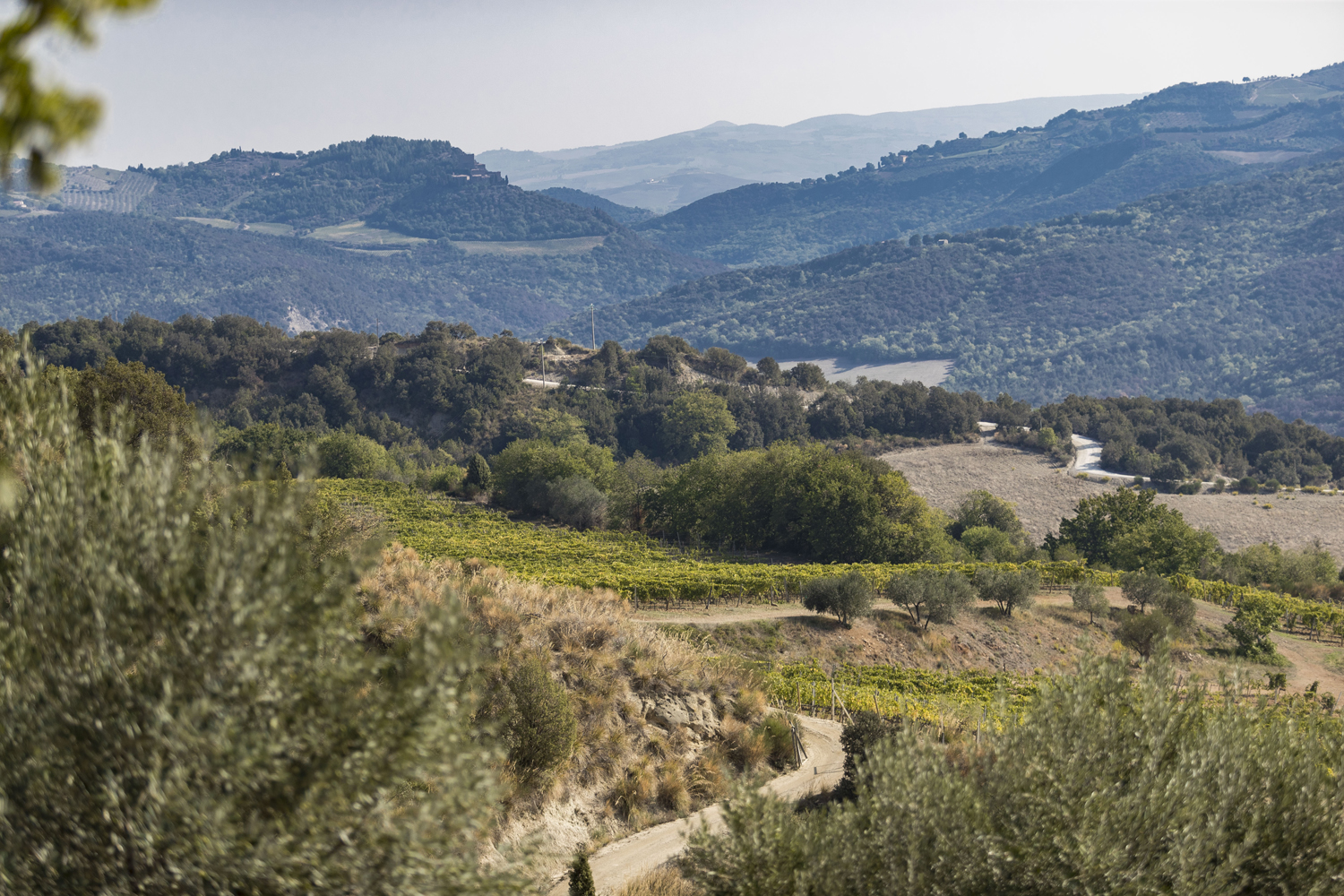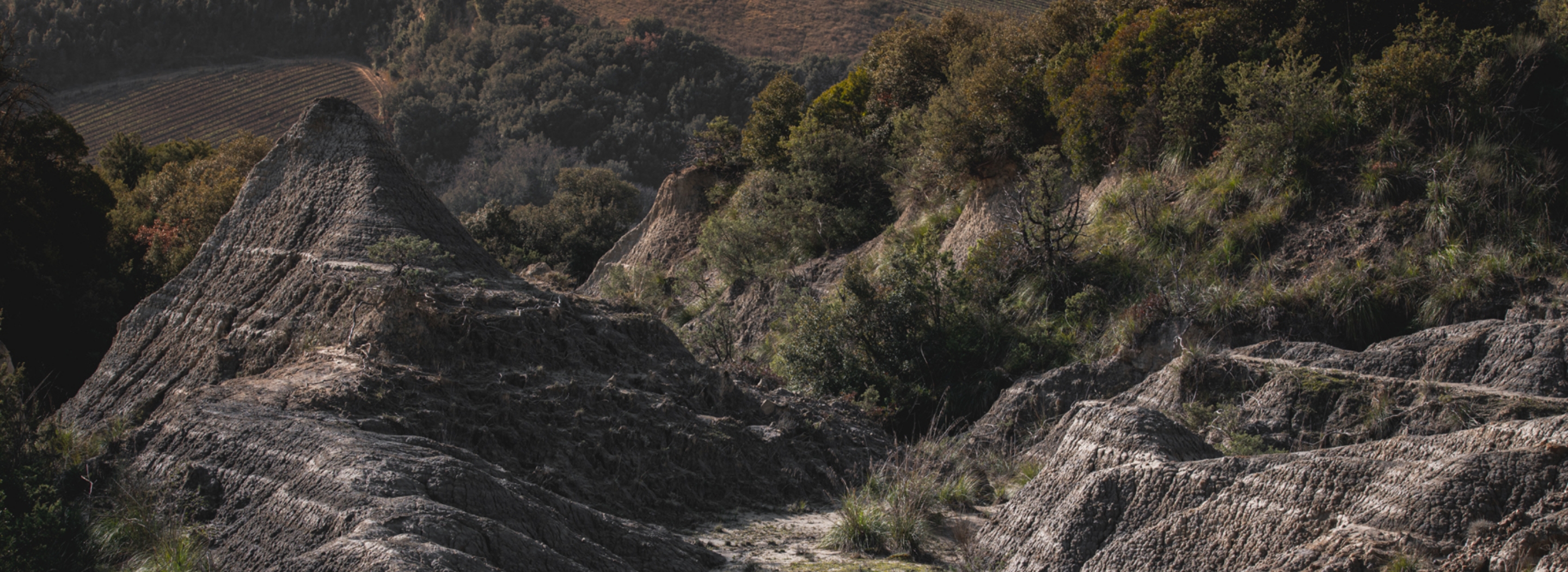
Millions of years ago, this land lay beneath a warm tropical sea, whose slow retreat left behind layers of clay, fossils, and minerals.
Over time, geological shifts and erosion gave rise to a strikingly colorful range of soils, whose hues and textures change gradually with elevation. At the base: softer, clay-rich soils dominated by galestro and argillite; higher up, rocky, mineral-laden outcrops of conglomerate and tuff.
Discover all soils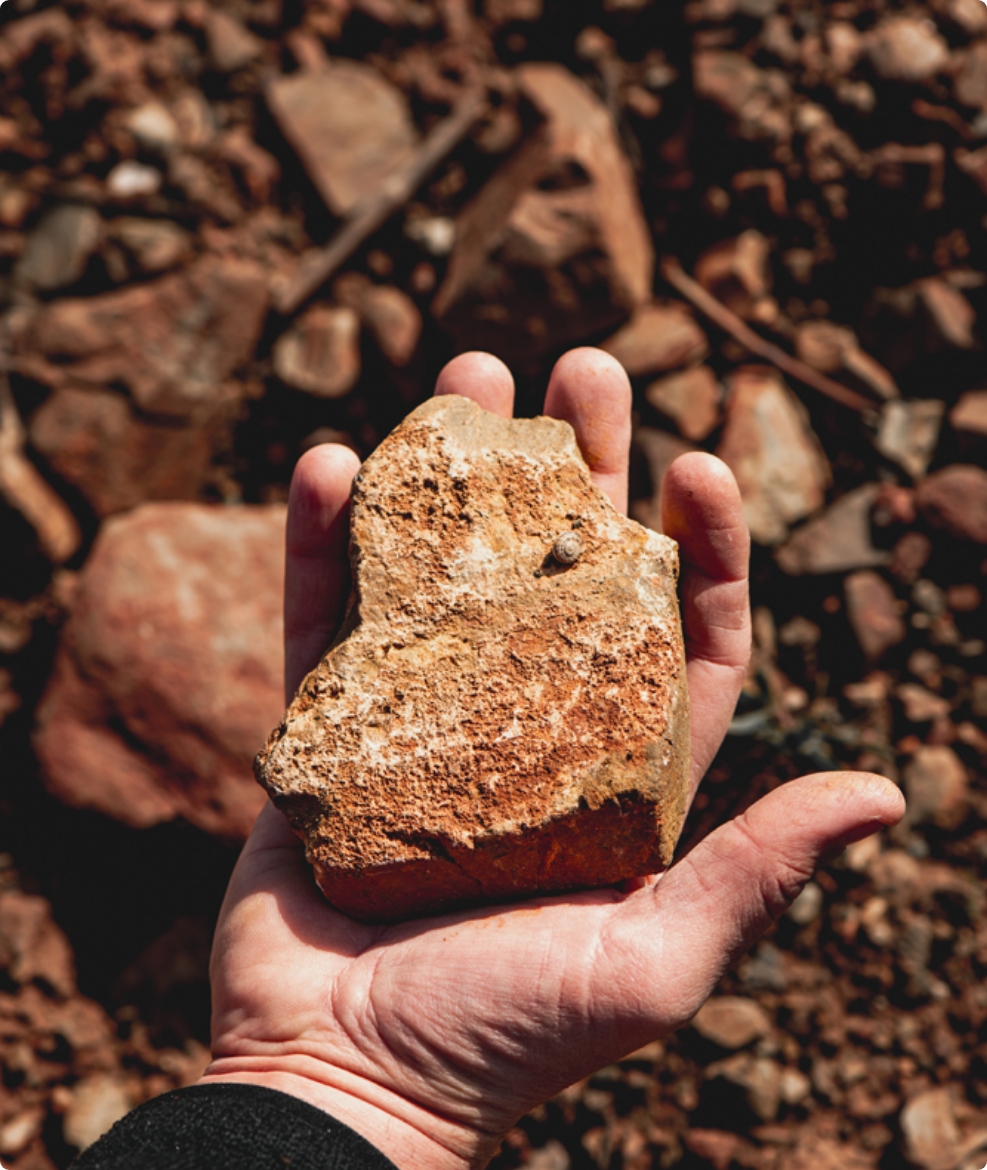
Clay is a constant, defining presence in the landscape of the Val d’Orcia — a legacy of the Pliocene sea that once covered the region. In the nearby Crete Senesi, these soils, mixed with rock salt and gypsum, are known as mattaione; at Tenuta San Giorgio, the clays are grey-hued, extreme, and untamed.
Their dense, tenacious nature and mineral richness offer the vines deep anchorage and steady nourishment. But their influence runs deeper still: these clays leave a clear mark on the wines, imparting pronounced depth and a vibrant brilliance of color. It is from this terrain that Brunello Ugolforte draws its bold, resolute character.
Here and there, tuff emerges from the surface – the tufaie, as they’re called locally, offer light, mineral-rich soils whose natural porosity ensures excellent drainage. This, in turn, promotes a healthier, more consistent ripening of the grapes, and a balanced extraction of phenolic compounds. It’s to these soils that San Giorgio’s wines owe their fullness and roundness.
At the top of the estate, a natural amphitheatre cradles the red soils – rich in iron and oxidized minerals. Poor in organic matter, these soils slow down the ripening process, allowing it to unfold gradually and evenly. The grapes that grow here are smaller, with thicker skins – traits that lead to a greater concentration of phenolic compounds and, in turn, wines with depth, structure, and presence.
At the base of the slopes, galestro and argillite are the dominant features. Galestro – a fragile mix of silt and clay – ensures excellent drainage and provides an ideal mineral supply, contributing to the wines’ refined and layered tannic structure. Argillite, more compact and moisture-retentive, offers natural fertility and steady support to the vines, enriching the wines with depth and intensity.
Sandstone is found mostly along the lower slopes of the estate, where silica-rich soils are composed of well-compacted sand and pebbles. These soils offer excellent drainage, reducing the risk of waterlogging and encouraging balanced vine growth. Their particular composition lends San Giorgio’s wines a vivid acidity and a striking purity in their fruit expression.
Toward the top of the hills, conglomerates and porous volcanic rock begin to emerge – remnants of Monte Amiata’s ancient eruptions. These porous formations, often accompanied by thermal water outcrops, enrich the soil with valuable minerals, creating the conditions for Sangiovese to develop greater aromatic nuance and textural depth.
Calanchi are formed by intense water erosion on unstable clay slopes. These are extreme soils – and extreme landscapes: barren, mineral-rich, and almost entirely devoid of vegetation. The grey clays that define them are notoriously difficult to work, but their toughness yields wines of remarkable structure and firm, long-lasting intensity.
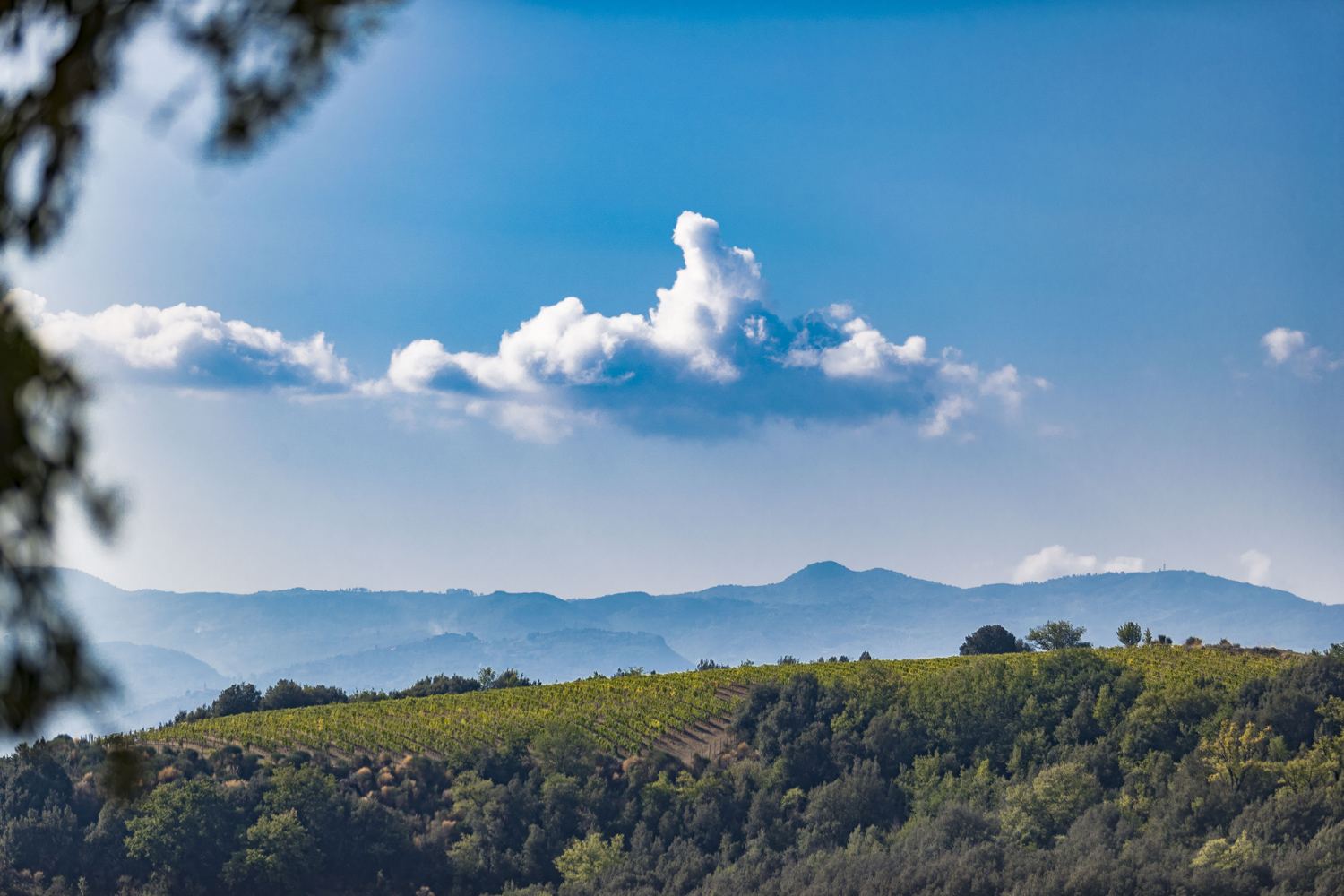
At the foot
of the Mountain
At the foot of Monte Amiata, in the heart of southern Tuscany, Tenuta San Giorgio unfolds across the hills south of Montalcino, in the municipality of Castelnuovo dell’Abate – a vantage point overlooking the Val d’Orcia, open to the east and southeast from a ridge at 400 meters above sea level.
Amiata is a constant and generous presence. At night, it brings cool air down into the valley; during the day, it draws warm currents upward — a natural rhythm that supports and nurtures the vine.
From the west, the sea arrives as a dry Mediterranean breeze, threading through the rows. Here, biodiversity is central. 110 hectares of woodland, olive groves, and farmland surround and shelter the vineyards, forming an intact, balanced ecosystem.
Vineyards